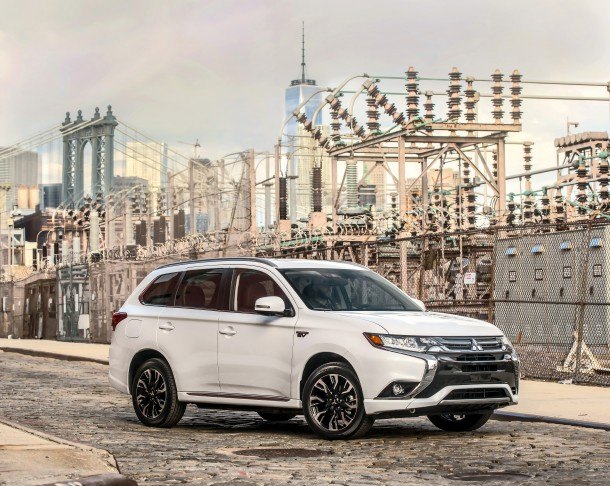#MitsubishiOutlanderPhev
Bring the Power: Next-Generation Mitsubishi Outlander PHEV Adds Displacement
The only hybrid vehicle in Mitsubishi’s meager lineup, the Outlander PHEV, will don a larger gasoline engine when it arrives for the 2021 model year. In a nod to the Gretas of the world, Mitsu will offset the boosted displacement with additional gas-free range.
Documents filed to the National Highway Traffic Safety Administration reveal details of the upcoming midsize crossover, which should be the first Mitsubishi-branded vehicle to borrow serious kit from its alliance partners.
PHEV Is Fine: Mitsubishi Says It Knows What Green Buyers Want
While the brand name inspires more than a few snorts of derision and jokes in North America, Mitsubishi, now backed by the mighty Renault-Nissan Alliance, carries greater clout overseas. The automaker’s Outlander PHEV outsells all other plug-in hybrids in the UK, and global sales of the brand’s vehicles are on the upswing.
Being a part of the alliance means Mitsu will soon have its hands on new architecture, but the brand claims it isn’t about to go all snobby with a line of dedicated electric car models. Sure, there’ll be EVs in the future, but they won’t be standalone models. The automaker claims the technology it’s most known for — plug-in hybrid powertrains — remains the best bet for most consumers, and that’s why it plans to focus mainly on PHEV.
Also, you really won’t need an EV if you buy the next-generation Outlander PHEV, claims Mitsubishi strategy boss Vincent Cobee.
2019 Mitsubishi Outlander PHEV: Stealthy Plug-in Due for a Power Boost
Unlike the ad campaign you’ve no doubt seen for the new Eclipse Cross crossover, Mitsubishi’s long-awaited Outlander PHEV plug-in arrived on North American shores with little fanfare. Outlander PHEV sales quietly kicked off in January, years after its overseas debut.
Even though it’s just arrived, news from the Geneva Motor Show tells us there’s changes afoot for Mitsubishi’s sole green model. More grunt is on the way.
Finally, Mitsubishi Releases Pricing and Specs for the 2018 Outlander PHEV
Even though North American Mitsubishi sales have ticked upward in recent years, the current decade has not been kind to the brand. Volume is roughly a quarter of what it was just 15 years ago and the bulk of those deliveries come from the Outlander and Outlander Sport.
When your entire existence hinges on a couple of models, you do what you can to keep them relevant. While plug-in hybrids aren’t exactly a massive sales draw, they’re gaining ground and Mitsubishi’s Outlander PHEV bests most of its EV competition in Europe. Naturally, the automaker deemed it worthy of coming to America (on the slowest boat imaginable).
We know this exciting news probably has you squirming in your chair, covering your mouth as you utter uncontrollable squeaks of joy. But hold on, we haven’t even told you about the price.
2017 Mitsubishi Outlander PHEV Again Postponed, Won't Arrive Until Next Summer
The long-anticipated Mitsubishi Outlander plug-in hybrid, expected later this year, has once again been postponed for the U.S. and Canada.
This is at least the fifth time it’s been delayed in North America since its 2013 Japan-market launch. Mitsubishi’s U.S. market public relations manager, Alex Fedorak, confirmed the latest delay.
“Following a thorough evaluation process, we have determined that, in order to meet a level of competitiveness that will exceed customer expectations in the United States, the launch of the Outlander PHEV will be delayed until the summer of 2017,” said Fedorak.

















Recent Comments